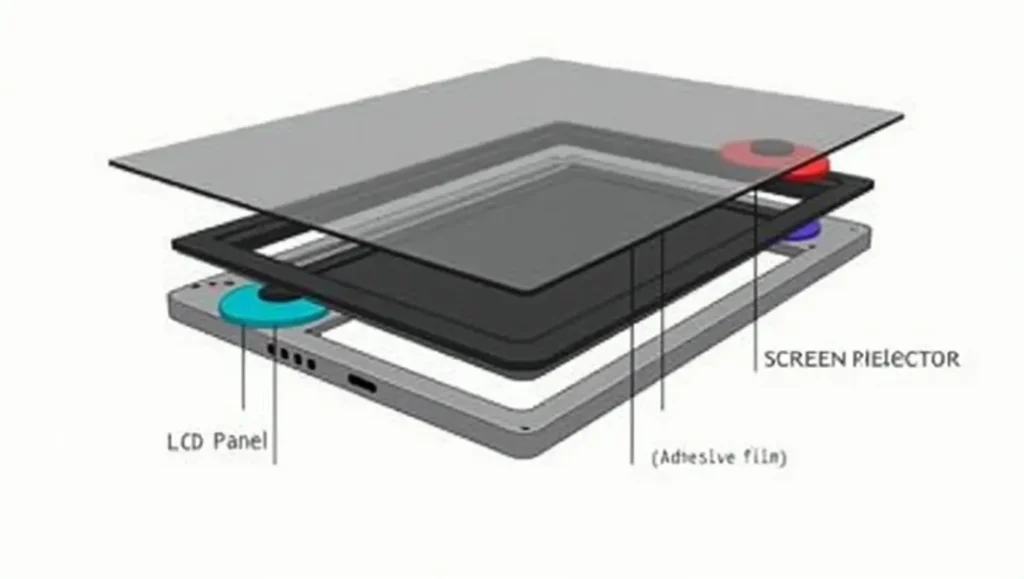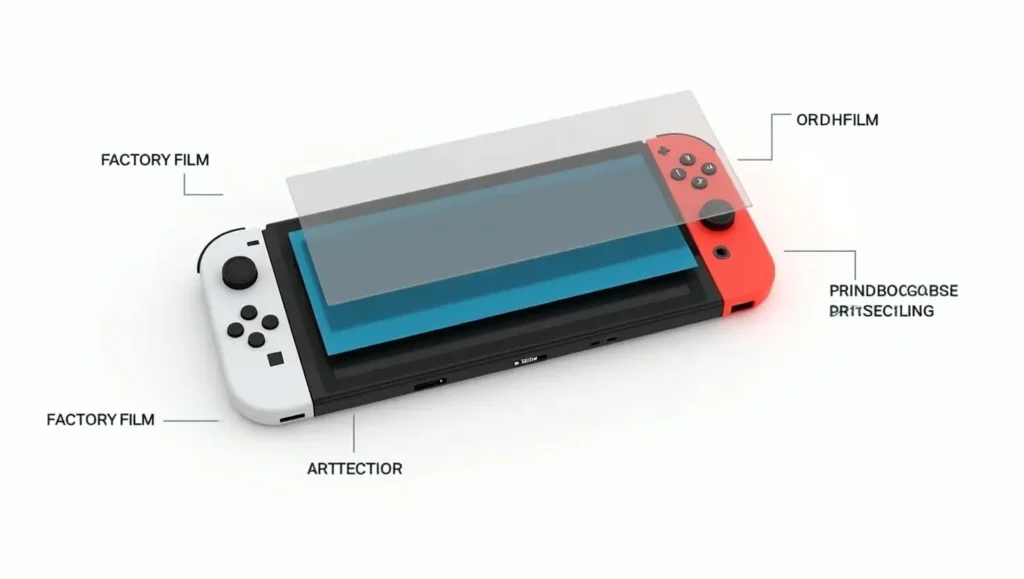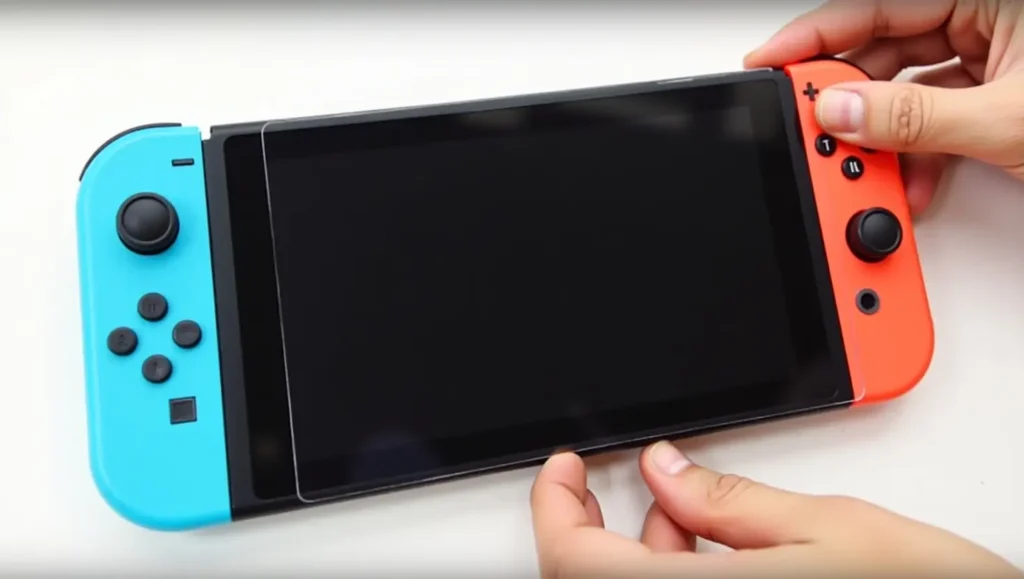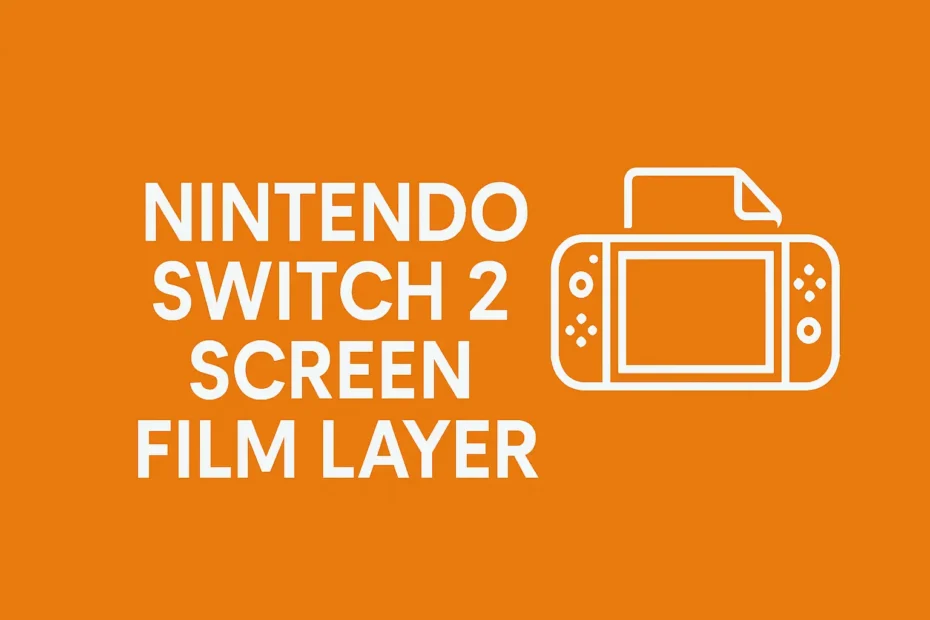The Unboxing Mistake That Could Break Your Switch 2
You’ve waited years. You finally unbox your Nintendo Switch 2. As you peel off the protective plastics, you spot a film on the screen. Instinct screams: “Remove it!” DON’T. That layer isn’t shipping packaging—it’s a critical safety component designed to protect you and your console. Nintendo’s official manuals explicitly warn: “Do not peel it off”.
The Official Warning: “The screen is covered with a film layer designed to prevent fragments scattering in the event of damage. Do not peel it off.” — Nintendo Switch 2 Instruction Manual
Ignoring this could turn a cracked screen into a hazardous shrapnel event. Let’s break down why this film exists, how it differs from screen protectors, and how to handle it.
What Is the Switch 2’s Pre-Applied Film Layer?
Safety First: It’s a Fragmentation Shield
Unlike typical screen protectors (which guard against scratches), this pre-installed polymer film is bonded to the LCD panel during manufacturing. Its sole purpose: contain glass fragments if the screen suffers impact damage. Think of it like laminated car glass—cracks might appear, but shattered pieces stay glued together, preventing injury from flying shards.

Not New, But Easily Misunderstood
The Switch OLED had an identical layer, but many users mistook it for temporary packaging. Nintendo’s repeated warnings in the Switch 2 manual suggest confusion remains widespread.
Why Peeling It Off Is a Terrible Idea
- Safety Risk: Without the film, a cracked screen could scatter sharp fragments—especially dangerous in handheld mode near your face or hands.
- Voids Warranties: Nintendo’s manual lists this under “Careful Usage.” Removal may void your warranty if damage occurs.
- No Replacement: This isn’t a removable accessory. Reapplying it yourself is impossible—once gone, it’s gone.
A Cautionary Tale: Samsung’s Galaxy Fold Disaster
In 2019, reviewers peeled a “screen protector” off Samsung’s foldable phone, rendering devices unusable. The mishap forced a redesign and clearer warnings—mirroring Nintendo’s proactive approach today.
Screen Protectors vs. The Film Layer: Key Differences
| Feature | Nintendo’s Pre-Applied Film | Tempered Glass Screen Protector |
|---|---|---|
| Purpose | Safety: Contains glass fragments | Protection: Prevents scratches/scuffs |
| Removable? | No – permanent fixture | Yes – replaceable |
| Material | Thin adhesive polymer layer | Reinforced glass (9H hardness) |
| Added by | Nintendo (factory-applied) | User or retailer |
| Impact on Touch Feel | Minimal | Varies by quality |
Crucial Note: You can (and should) apply a screen protector ON TOP of Nintendo’s film. This dual-layer approach maximizes protection.

How to Apply a Screen Protector CORRECTLY
Nintendo sells official screen protectors, and brands like Spigen offer options. Follow these steps to avoid damaging the underlying film:
- Work in a Dust-Free Zone
Clean hands, no fans, wipe the screen with included alcohol swabs. - Use Applicator Tools
Kits include stickers/hinges to align the protector without touching adhesive. - Press Gently
Start from the center, pushing air bubbles outward. Do NOT lift once applied!.
⚠️ Never use sharp tools to remove bubbles—you might puncture the film.

Real User Queries Answered (FAQs)
Q: “I removed the film! What now?”
A: Contact Nintendo Support immediately. Do not use the console until assessed—exposed glass is fragile.
Q: “Can docked mode damage the screen?”
A: Yes! Switch OLED users reported scratches from docking. A tempered glass protector is essential even if you rarely play handheld.
Q: “Will the film affect screen clarity?”
A: Minimal impact. High-quality screen protectors (e.g., Orzly’s 99% light transmittance) preserve visuals.
Q: “Does the film prevent cracks?”
A: No—it only contains fragments after damage. For crack prevention, use a case and avoid drops.
Why Nintendo’s Design Matters Beyond Safety
This film reflects a broader trend: engineering for real-world accidents. Modern devices prioritize user safety alongside durability. For the Switch 2—a hybrid console often used by kids—this layer is non-negotiable. As one Reddit user noted:
“My toddler threw my Switch OLED down stairs. Screen cracked like a spiderweb, but no pieces fell out. Thank god for that film.”
Final Verdict: Protect the Protector
Nintendo’s film layer isn’t a marketing gimmick—it’s a mandatory safety feature. Pair it with a tempered glass screen protector (like Spigen’s NanoGlass or Nintendo’s Official Kit) for maximum defense against life’s accidents.
Remember:
✅ DO leave the factory film intact.
✅ DO add a screen protector on top.
✅ DON’T treat unboxing like ASMR—read the manual first!
